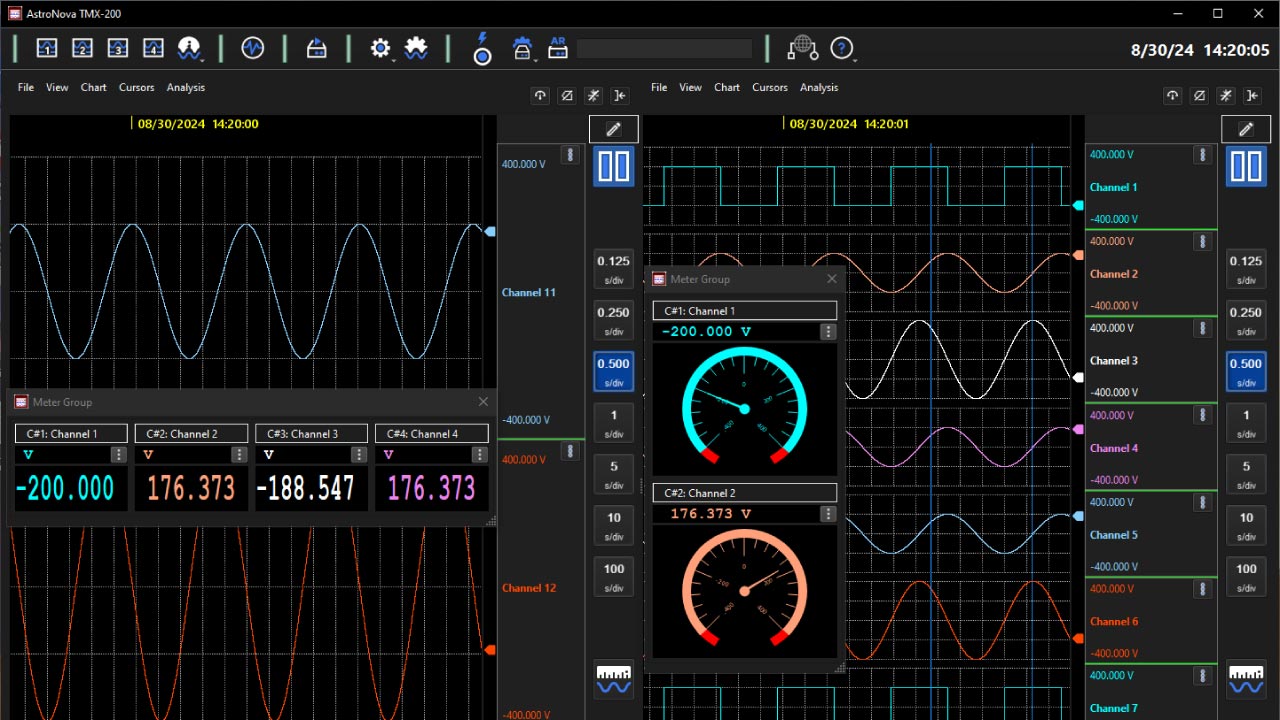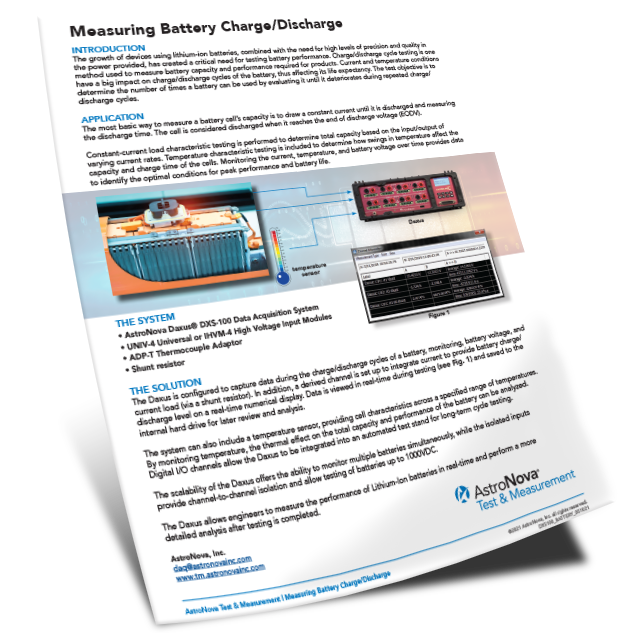
For a data acquisition system (DAS) that is all-in-one, programmable, easy to use, and offers the ability to train and implement procedures easily, here are some key features and solutions you should look for:
1. All-in-One Portable Hardware and Software Solution
An ideal DAS should include both the hardware (signal conditioning, data conversion and data acquisition) and software (for visualization, analysis, and control) in a unified platform. Manufacturers offer such integrated solutions that allow for seamless operation, reducing the need for third-party equipment and software.
- AstroNova offers portable, all-in-one series of data acquisition systems, which are modular and expandable and can support a wide range of sensors. The internal user interface software is customizable and intuitive for users, which helps streamline both programming and data analysis.
2. Programmable Setups
Look for systems with programmable capabilities so you can automate data acquisition tasks and procedures. Systems with flexible software provide support for automation of setup processes, reducing manual intervention.
- Programmable trigger settings, allowing for the system to automatically start/stop data collection based on certain conditions.
- Customizable sampling rates and compressed data formats help to minimize file sizes and make for a manageable analysis file to suit your needs.
- Pre-configured templates or wizards in the software for setting up common tasks, reducing setup complexity and making it easy to train and put procedures in place for operation.
3. Ease of Use
An intuitive user interface is crucial for reducing setup time and errors. Look for systems with:
- Programmable functions for real time and capture setups, where users can set up and manage data channels without requiring coding skills.
- Pre-built workflows for common tasks like logging, graphing, analyzing, and exporting data.
- Real-time data visualization, where users can see the data live, adjust parameters, and analyze results without needing a second tool.
4. Training and Standard Operating Procedures (SOPs)
A system that supports ease of training and creating SOPs is essential. The key is to choose a solution with the following:
- Comprehensive documentation and tutorials provided by the manufacturer (such as online guides or video tutorials).
- Simple setup wizards that walk users through the process of configuring the system and generating reports.
- Role-based access: Ensuring different users (engineers, operators) can access different features or modify settings according to their roles.
- Built-in training modes: Some systems allow operators to train on mock data without affecting actual operations.
- All-in-one monitoring and reporting tools, where operators can monitor real-time data and follow procedures remotely. This also allows users to record processes and generate logs for review and compliance.
5. Example of Comprehensive System
- AstroNova’s TMX-200 series products: This system offers an easy-to-use interface with pre-programmed templates, multiple windows and automatic data collection. It’s designed for industrial and laboratory use, offering scalability and integration with various data sources.
6. Data Security and Compliance
Ensure the system supports data integrity, audit trails, and compliance standards, especially if the data is being collected in regulated industries. This can be an essential part of standard operating procedures.
Conclusion
Choosing the right data acquisition system requires balancing ease of use, flexibility, and scalability. Solutions like AstroNova’s TMX-200 series offer programmable setups with intuitive interfaces and automated processes. Training becomes more efficient with built-in procedures and wizards, ensuring that operations follow standard protocols with minimal training required.


